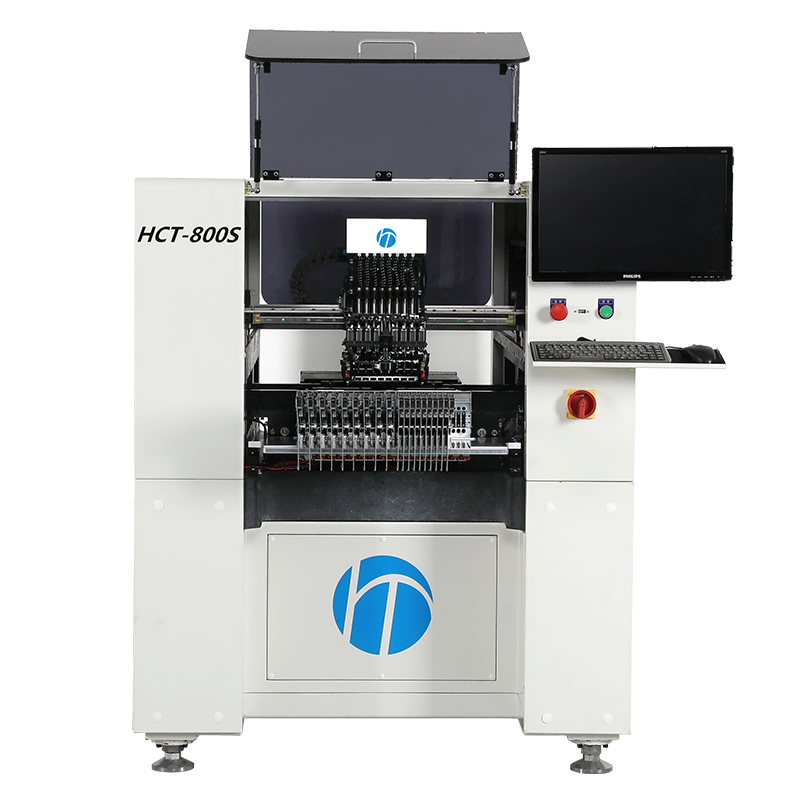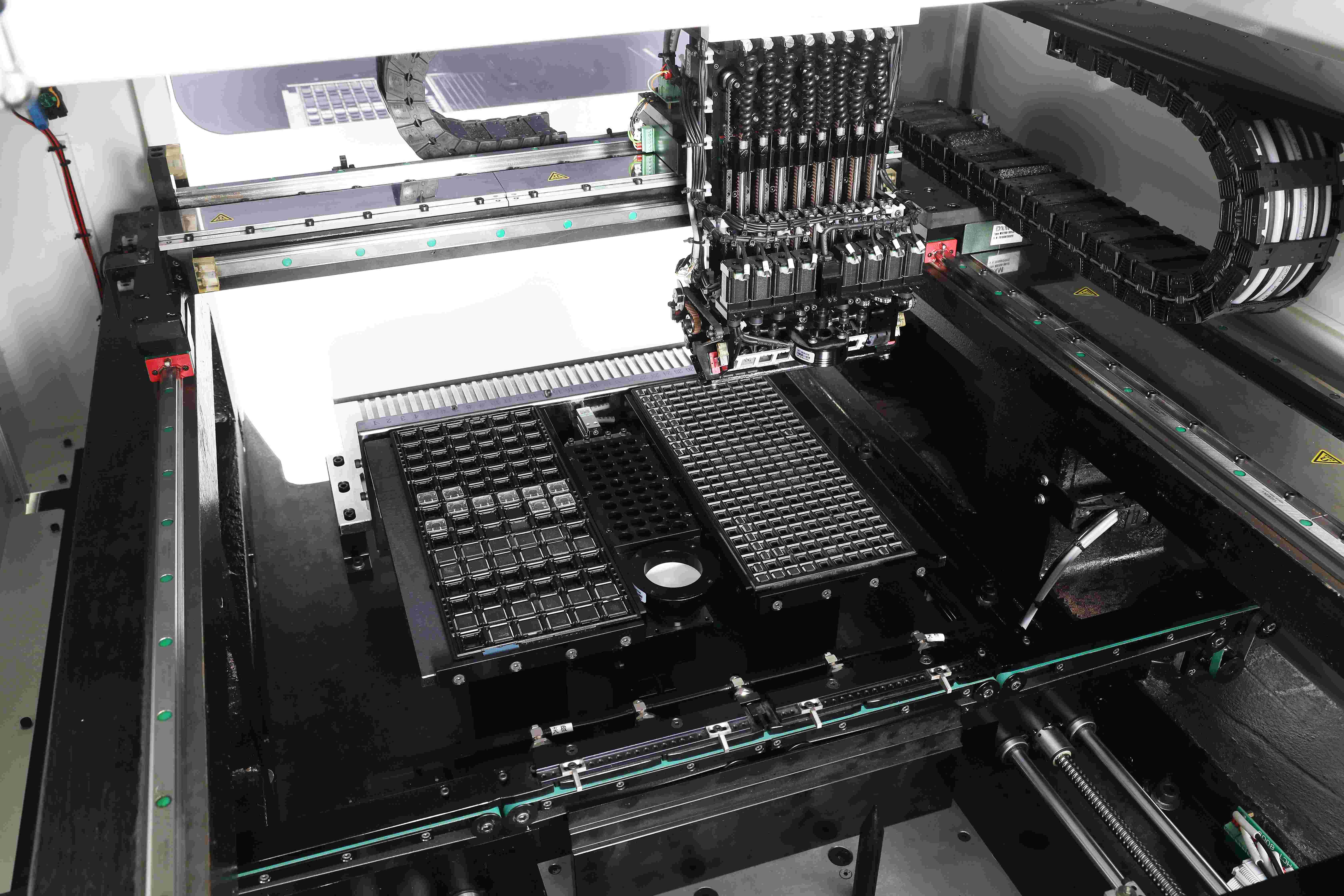Email format error
Email cannot be empty
Email already exists
6-20 characters(letters plus numbers only)
The password is inconsistent
Email format error
Email cannot be empty
Email does not exist
6-20 characters(letters plus numbers only)
The password is inconsistent


Enhancing Efficiency in Electronics Manufacturing with Automatic SMT Pick and Place Machines
In the ever-evolving landscape of electronics manufacturing, efficiency and precision are paramount. Enter automatic SMT (Surface Mount Technology) pick and place machines, the backbone of modern assembly lines. These sophisticated machines automate the placement of electronic components onto printed circuit boards (PCBs), revolutionizing the production process. In this comprehensive guide, we delve into the intricacies of automatic SMT pick and place machines, exploring their features, benefits, applications, and the transformative impact they have on the industry.
Understanding Automatic SMT Pick and Place Machines
Automatic SMT pick and place machines are advanced robotic systems designed to streamline the assembly of electronic components onto PCBs. They feature intricate mechanisms, precision-guided robotic arms, and intelligent software algorithms to achieve high-speed and high-accuracy component placement. These machines come in various configurations, ranging from compact desktop models to fully automated production lines, catering to the diverse needs of manufacturers worldwide.
The Core Components of Automatic SMT Pick and Place Machines
1. Vision Systems: Advanced cameras and image processing algorithms enable the machines to accurately identify component positions, orientations, and solder pad locations on PCBs.
2. Placement Heads: These robotic arms equipped with specialized nozzles are responsible for picking up electronic components from feeder reels and accurately placing them onto the PCB with micron-level precision.
3. Feeder Systems: The pick and place machines are equipped with feeder systems that store and dispense electronic components to the placement heads. These feeders come in various types, including tape, reel, tray, and tube feeders, to accommodate different component packaging formats.
Benefits of Automatic SMT Pick and Place Machines
1. Increased Productivity: By automating the component placement process, the pick and place machines significantly reduce assembly time and labor costs, leading to higher throughput and increased production efficiency.
2. Improved Accuracy and Consistency: The precision-guided robotic arms and advanced vision systems ensure accurate component placement, minimizing errors and rework. This consistency enhances the overall quality and reliability of the assembled PCBs.
3. Versatility and Flexibility: The pick and place machines are capable of handling a wide range of electronic components, including surface-mount devices (SMDs), through-hole components, and specialized packages such as BGAs and QFNs. This versatility enables manufacturers to produce diverse PCB designs without retooling or reprogramming the machine extensively.
4. Cost-Effectiveness: While the initial investment in the pick and place machines may be significant, the long-term cost savings in labor, material waste, and production downtime outweigh the upfront expenses. These machines optimize resource utilization and maximize production output, resulting in a rapid return on investment for manufacturers.
Applications of Automatic SMT Pick and Place Machines
1. Mass Production: The pick and place machines are ideally suited for high-volume production runs, where speed, accuracy, and consistency are paramount. These machines can seamlessly integrate into fully automated assembly lines, enabling continuous and uninterrupted production.
2. Electronics Contract Manufacturing (ECM): ECM companies leverage SMT pick and place machines to fulfill large-scale manufacturing contracts for clients across various industries, including consumer electronics, automotive, telecommunications, and aerospace.
3. Prototyping and Small Batch Production: Despite their scalability, SMT pick and place machines are also suitable for prototyping and small batch production. Manufacturers can quickly reconfigure the machines to accommodate new PCB designs and produce limited quantities of electronic devices with minimal setup time.
4. Research and Development: R&D labs and academic institutions utilize SMT pick and place machines to prototype and test new electronic designs. These machines enable researchers to iterate rapidly on PCB layouts, evaluate component compatibility, and validate design concepts before transitioning to mass production.
Key Considerations When Selecting an Automatic SMT Pick and Place Machine
1. Throughput and Speed: Evaluate the machine's throughput capabilities, expressed in components placed per hour, to ensure it aligns with your production requirements and target output volumes.
2. Component Compatibility and Handling: Assess the machine's compatibility with various electronic components, including component sizes, types, and packaging formats. Additionally, consider the machine's handling capabilities for delicate or specialized components, such as fine-pitch ICs and fragile components.
3. Software Integration and Programming: Look for machines that seamlessly integrate with industry-standard CAD/CAM (Computer-Aided Design/Computer-Aided Manufacturing) software for streamlined PCB design and assembly. The machine's programming interface should be user-friendly and intuitive, allowing operators to quickly program and optimize production workflows.
4. Support and Maintenance: Choose a reputable manufacturer or vendor that offers comprehensive technical support, training programs, and maintenance services for the SMT pick and place machine. Regular maintenance and software updates are essential to ensure optimal machine performance and reliability.
Future Trends in Automatic SMT Pick and Place Technology
1. Industry 4.0 Integration: The SMT pick and place machines are poised to play a central role in the Industry 4.0 revolution, where smart factories leverage interconnected technologies, IoT (Internet of Things) devices, and data analytics to optimize production processes and achieve unprecedented levels of efficiency and agility.
2. Advanced Vision Systems: The integration of artificial intelligence (AI) and machine learning algorithms into the SMT pick and place machines will enhance their vision systems, enabling real-time component recognition, defect detection, and adaptive placement strategies.
3. Collaborative Robotics: The emergence of collaborative robotic systems will enable human operators to work alongside SMT pick and place machines safely. These collaborative robots (cobots) can assist with tasks such as component loading, feeder replenishment, and quality control, augmenting the capabilities of the assembly line workforce.
4. Additive Manufacturing Integration: The integration of additive manufacturing technologies, such as 3D printing and laser direct structuring (LDS), with the pick and place machines will enable the production of customized PCBs with embedded components, reducing assembly complexity and enhancing design flexibility.
Conclusion
Automatic SMT pick and place machines represent a cornerstone of modern electronics manufacturing, enabling unprecedented levels of efficiency, accuracy, and versatility in PCB assembly. Whether you're a large-scale manufacturer, an ECM provider, or an R&D professional, these machines offer indispensable capabilities for bringing electronic designs to life. By harnessing the power of automation, advanced robotics, and intelligent software, automatic SMT pick and place machines pave the way for a future where electronics manufacturing is faster, smarter, and more agile than ever before.

